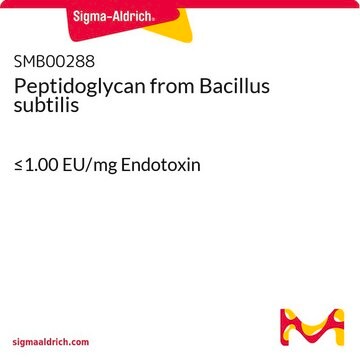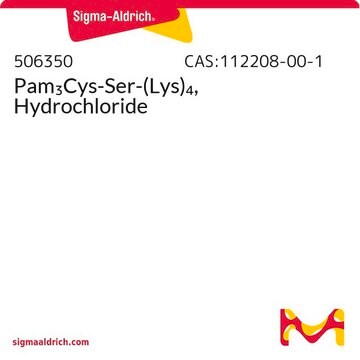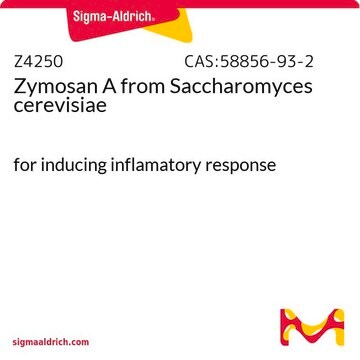77140
Peptidoglycan from Staphylococcus aureus
cell wall component
Synonym(s):
Peptidoglycan from S. aureus
About This Item
Recommended Products
form
lyophilized powder
solubility
soluble, hazy to turbid, colorless to faintly yellow
storage temp.
−20°C
Related Categories
Application
- for the stimulation of lymphocytes: peptidoglycan activates the toll-like receptor 2 (TLR2), present in mammalian cells. It works as an antagonist of Poly (I:C)
- for g-type lysozyme stimulation by intraperitoneally inoculating it into sole specimens
- in phosphate buffer saline and injected into Labeo rohita fingerlings, to study its effect on nucleotide-binding oligomerization domain-2 (NOD-2) gene expression
Biochem/physiol Actions
Packaging
Other Notes
Storage Class Code
11 - Combustible Solids
WGK
WGK 3
Flash Point(F)
Not applicable
Flash Point(C)
Not applicable
Personal Protective Equipment
Certificates of Analysis (COA)
Search for Certificates of Analysis (COA) by entering the products Lot/Batch Number. Lot and Batch Numbers can be found on a product’s label following the words ‘Lot’ or ‘Batch’.
Already Own This Product?
Find documentation for the products that you have recently purchased in the Document Library.
Customers Also Viewed
Articles
Peptidoglycan structure: alternating GlcNAc and N-acetylmuramic acid cross-linked to peptides form the basic backbone.
Peptidoglycan structure: alternating GlcNAc and N-acetylmuramic acid cross-linked to peptides form the basic backbone.
Peptidoglycan structure: alternating GlcNAc and N-acetylmuramic acid cross-linked to peptides form the basic backbone.
Peptidoglycan structure: alternating GlcNAc and N-acetylmuramic acid cross-linked to peptides form the basic backbone.
Our team of scientists has experience in all areas of research including Life Science, Material Science, Chemical Synthesis, Chromatography, Analytical and many others.
Contact Technical Service








